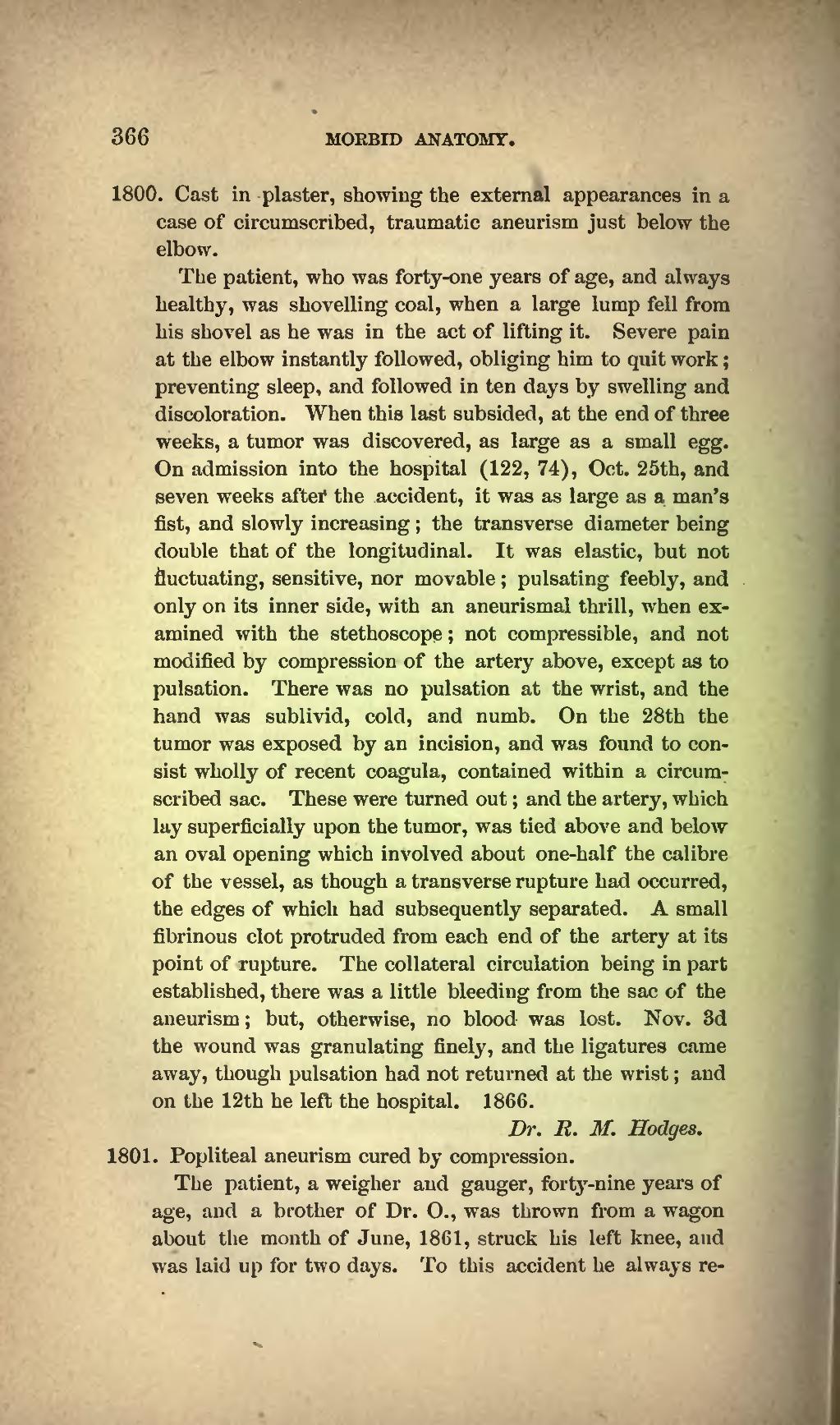366 MORBID ANATOMY.
1800. Cast in plaster, showing the external appearances in a case of circumscribed, traumatic aneurism just below the elbow.
The patient, who was forty-one years of age, and always healthy, was shovelling coal, when a large lump fell from his shovel as he was in the act of lifting it. Severe pain at the elbow instantly followed, obliging him to quit work ; preventing sleep, and followed in ten days by swelling and discoloration. When this last subsided, at the end of three weeks, a tumor was discovered, as large as a small egg. On admission into the hospital (122, 74), Oct. 25th, and seven weeks after the accident, it was as large as a man's fist, and slowly increasing ; the transverse diameter being double that of the longitudinal. It was elastic, but not fluctuating, sensitive, nor movable; pulsating feebly, and only on its inner side, with an aneurismal thrill, when ex- amined with the stethoscope ; not compressible, and not modified by compression of the artery above, except as to pulsation. There was no pulsation at the wrist, and the hand was sublivid, cold, and numb. On the 28th the tumor was exposed by an incision, and was found to con- sist wholly of recent coagula, contained within a circum- scribed sac. These were turned out ; and the artery, which lay superficially upon the tumor, was tied above and below an oval opening which involved about one-half the calibre of the vessel, as though a transverse rupture had occurred, the edges of which had subsequently separated. A small fibrinous clot protruded from each end of the artery at its point of rupture. The collateral circulation being in part established, there was a little bleeding from the sac of the aneurism ; but, otherwise, no blood was lost. Nov. 3d the wound was granulating finely, and the ligatures came away, though pulsation had not returned at the wrist ; and on the 12th he left the hospital. 1866.
Dr. R. M. Hodges.
1801. Popliteal aneurism cured by compression.
The patient, a weigher and gauger, fort3 r -nine years of age, and a brother of Dr. O., was thrown from a wagon about the month of June, 1861, struck his left knee, and was laid up for two days. To this accident he always re-
�� �
